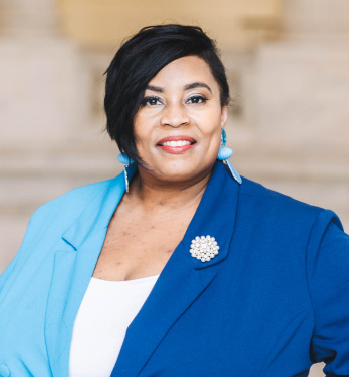


2025 Jobs Report
Together with our higher education and employer partners, we’re proving what’s possible when you empower the next generation of leaders with the skills, networks, experiences, and confidence necessary to launch a strong career.



Together with our higher education and employer partners, we’re proving what’s possible when you empower the next generation of leaders with the skills, networks, experiences, and confidence necessary to launch a strong career.

By 2032, our ambition is to work with 80,000-100,000 students, empowering 25,000 new students through the course each year.
To date, we’ve worked with 12,000 Fellows in many communities across the country.
Nationally, only about 30% of 1.4 million low-income or first-generation college students who enroll in college each year will graduate and secure a strong first job or enter graduate school.1
Braven empowers promising college students on their paths toward quality economic opportunities through a semester-long, cohort-based course—developed with input from our higher education partners and faculty—and support that extends beyond the course, continuing through six months after college graduation.
In our core higher education model, students take the course for credit. Students who come through BravenX via college success organizations receive a financial stipend in lieu of credit.











The percentage of students enrolled in at least one distance education course doubled.2
In March 2022, job openings
rebounded to the highest level recorded since 2000: 12 million openings.3
The Braven Class of 2024 had the highest rate of internship attainment out of the past 6 graduating classes largely due to increases in internship opportunities post-pandemic.4
The newest job seekers, those aged 20 to 24, saw a 1.2 percentage point increase in their unemployment rate -- 4x the growth in the unemployment rate across all workers.5, 6
The percentage of students enrolled in at least one distance education course doubled.2
In March 2022, job openings
rebounded to the highest level recorded since 2000: 12 million openings.3
The Braven Class of 2024 had the highest rate of internship attainment out of the past 6 graduating classes largely due to increases in internship opportunities post-pandemic.4
The newest job seekers, those aged 20 to 24, saw a 1.2 percentage point increase in their unemployment rate -- 4x the growth in the unemployment rate across all workers.5, 6
South Bay, which includes San José, is down 58,000 jobs (-1.4%) from pre-pandemic levels, with growth plateauing for most of 2024.8



54% graduates secured quality opportunities, and 78% are employed overall or enrolled in graduate school.9



a full-time role that requires a bachelor’s degree and includes some combination of promotion pathways, employee benefits, and a market-competitive starting salary, or enrollment in graduate school
a role that does not require a bachelor’s degree but helps students’ financial sustainability, is aligned with career interests, and will likely lead to more career-accelerating possibilities through skill development
a role that does not require a bachelor’s degree, offers limited runway to additional career-accelerating opportunities, and is not aligned with students’ career interests

International Schools
/ Denotes schools in Washington D.C. area (8)
* Denotes schools in New York City area (9)
+ Denotes schools in Chicago area (8)
International Schools
/ Denotes schools in Washington D.C. area (8)
* Denotes schools in New York City area (9)
+ Denotes schools in Chicago area (8)


74% of our graduates nationally are already out earning their parents at the same age in their first job out of college.12
By comparison, by age 30, Americans have a 50-50 shot of out-earning their parents.13
Most popular industries for Braven Fellows12





Braven defines a strong first job as one that requires a bachelor’s degree and is full-time, and also includes some combination of promotion pathways, employee benefits, and a market-competitive starting salary.
Six months post-graduation, SJSU Braven Fellows in the Class of 2024 are earning above the national average salary of all early career college graduates.
Compared to a national average of $42,537 of recent college graduates aged 23-24 who were employed in 202314
Compared to a national average of $49,630 of recent college graduates aged 23-24 who worked full-time in 202314

ARE IN ROLES ALIGNED WITH THEIR LONG-TERM CAREER INTERESTS12

HAVE A JOB WITH EMPLOYER PROVIDED
BENEFITS12

Paired with Leadership Coach Emily Sheu, Coach at Emily Sheu Coaching & Consulting, who provided Evelyn with
60 hours of mentorship
The Braven experience
equipped Evelyn with
5 key career competencies:
Self-driven leadership • Working in teams • Problem solving • Networking and communicating • Operating and managing
After the Braven course, Evelyn secured a high-quality internship:
Financial Accounting Advisory Services Intern, EY
“Braven at SJSU helped me build my personal brand by highlighting the power of storytelling. I was encouraged to see things differently and I realized I shouldn’t shy away from sharing my own story—especially if it has the potential to inspire others.”





Internships prepare students to launch strong careers by helping them:15



Signal to employers their acquired knowledge and skills16

Paid internships result in better career outcomes.17
The highest quality internships share these characteristics:15, 18
Acquiring an internship in Congress can be especially hard for students from humble beginnings, whether that be tied to financial constraint or networks. Braven’s Capitol Hill Fellowship lowers these barriers by supporting Fellows with applying to internships at Congressional offices, providing Capitol Hill Fellows with eight weeks of housing, professional development, a clothing stipend, and a monthly living stipend. Four Fellows participated in the inaugural year of the Fellowship.





Higher Education Partners
BravenX Partners
Employer Partners
LEAD
(250K+ and programmatic support)
ANCHOR
($100K+ and programmatic support)
KEYSTONE
($25K+ and programmatic support)
INNOVATION
($10K+ and programmatic support
IMPACT
($5K and/or programmatic support)